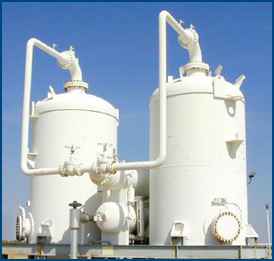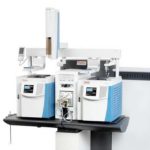Arian gas company activities in supplying different kinds of industrial, laboratory, and medical gases.
- pure Hydrogen sulfide Gas
- Hydrogen sulfide is the chemical compound with the formula H2S. It is a colorless gas with the characteristic foul odor of rotten eggs; it is heavier than air, very poisonous, corrosive, flammable, and explosive.
- Hydrogen sulfide often results from the bacterial breakdown of organic matter in the absence of oxygen, such as in swamps and sewers; this process is commonly known as anaerobic digestion. H2S also occurs in volcanic gases, natural gas, and some well waters. The human body produces small amounts of H2S and uses it as a signaling molecule.
- Dissolved in water, hydrogen sulfide is known as hydrosulfuric acid or sulfhydric acid, a weak acid.
- Swedish chemist Carl Wilhelm Scheele is credited with having discovered hydrogen sulfide in 1777.
- The British English spelling of this compound is hydrogen sulphide, but this spelling is not recommended by the International Union of Pure and Applied Chemistry nor the Royal Society of Chemistry.
Main applications
- Industries Applications
- Chemicals
- Hydrogen sulfide is used in the manufacture of sodium sulfide and thiophenes. It is used in chemical industries for iron or carbon steel protection against corrosion in processes using salts (e.g. NaCl).
- Laboratories & analysis
- Hydrogen sulfide is used to calibrate environmental emission monitoring, industrial hygiene monitors and trace impurity analyzers and as balance gas for some calibration mixtures.
Gas Properties
- Molecular weight : 34.08 g/mol
Solid phase
- Melting point : -86 °C
- Latent heat of fusion (1,013 bar, at triple point) : 69.75 kJ/kg
Liquid phase
- Liquid density (1.013 bar at boiling point) : 914.9 kg/m3
- Liquid/gas equivalent (1.013 bar and 15 °C (59 °F)) : 638 vol/vol
- Boiling point (1.013 bar) : -60.2 °C
- Latent heat of vaporization (1.013 bar at boiling point) : 547.58 kJ/kg
- Vapor pressure (at 21 °C or 70 °F) : 18.2 bar
Critical point
- Critical temperature : 100 °C
- Critical pressure : 89.37 bar
Gaseous phase
- Gas density (1.013 bar at boiling point) : 1.93 kg/m3
- Gas density (1.013 bar and 15 °C (59 °F)) : 1.45 kg/m3
- Compressibility Factor (Z) (1.013 bar and 15 °C (59 °F)) : 0.9915
- Specific gravity (air = 1) (1.013 bar and 15 °C (59 °F)) : 1.189
- Specific volume (1.013 bar and 21 °C (70 °F)) : 0.699 m3/kg
- Heat capacity at constant pressure (Cp) (1 bar and 25 °C (77 °F)) : 0.034 kJ/(mol.K)
- Viscosity (1.013 bar and 0 °C (32 °F)) : 0.0001179 Poise
- Thermal conductivity (1.013 bar and 0 °C (32 °F)) : 12.98 mW/(m.K)


